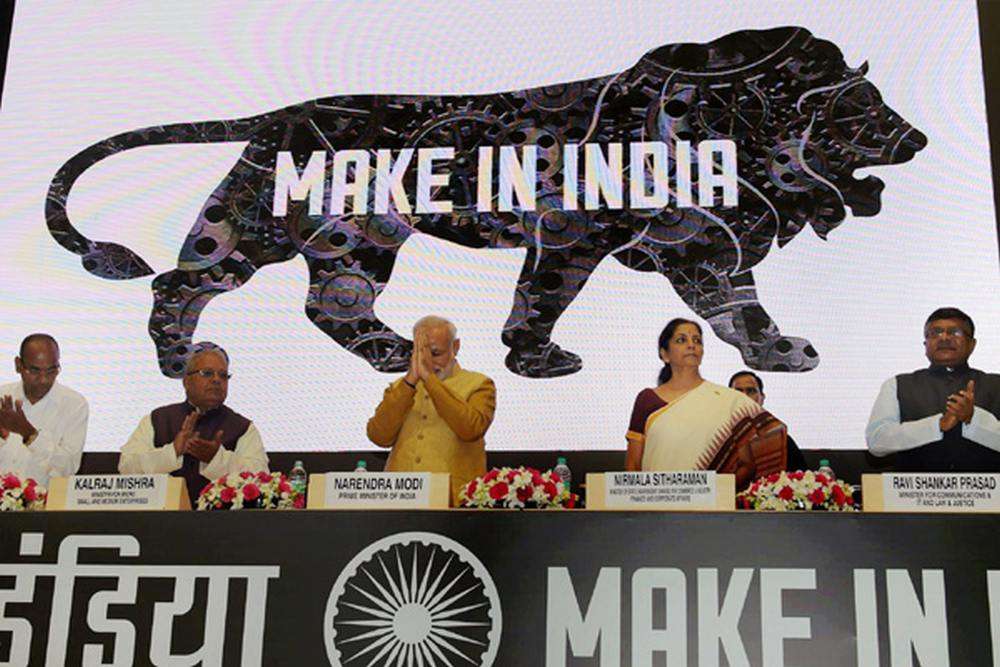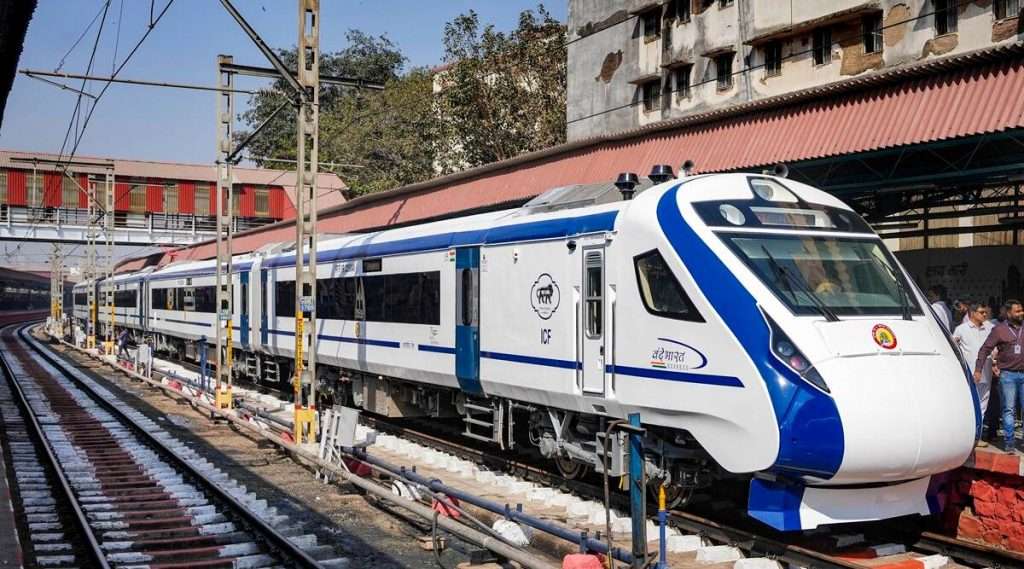Make In India – The New Indian Scheme 2023

Theme: Narendra Modi, who within a matter of months, launched the ‘Make in India’ campaign to facilitate investment, foster innovation, enhance skill development, protect intellectual property & build best-in-class manufacturing infrastructure. Make in India’ recognizes ‘ease of doing business’ because the most essential element to sell entrepreneurship. A range of initiatives have already been undertaken to ease the business environment. The goal is to de-license and de-modify the enterprise in the course of the whole lifecycle. Achievements of the ‘Make in India’ program: With the launch of Make in India, rules and policies are simplified. Now it is much easier to start a company in India. That means Red tape is reduced. India ranked 63rd out of 190 countries in the last World Bank’s Ease of Doing Business Index. Make in India program attracted Foreign Direct Investment (FDI) to India. FDI Equity inflow in Manufacturing Sectors has increased by 76% in FY 2021-22 (USD 21.34 billion) compared to the previous FY 2020-21 (USD 12.09 billion). The India Cellular & Electronics Association (ICEA) in 2018 stated that due to the manufacturing of domestic mobile handsets and components, the country has saved a whopping INR 3 lakh crore rupees of possible outflow in the last four years. This money was saved as the domestically manufactured and assembled handsets replaced the import of completely built units (CBUs). This also provided employment opportunities to approximately 4.5 lakh people. India has emerged as the second-largest mobile phone manufacturer in the world with a 126% jump in production from the financial year 2021-2022, shows government data. The Make in India program has pushed Self-reliance in the defence sector. As of 2021, India’s defence and aerospace manufacturing market has increased to worth Rs 85,000 crore with a private investment of Rs 18,000 crore. Our defence exports increased to Rs 5,711 crore in 2020-21. India had come a long way in the Global Innovation Index (GII) from the 81st rank in 2015 to the 40th rank in 2022. There is a boom of startups in India after launching Make in India. As of 2022, India has more than 100 unicorns (startups with a US$1 billion valuation or above). Several big multinational companies started their manufacturing units in India. New Infrastructure: The availability of modern and facilitating infrastructure is a very important requirement for the growth of the industry. The government intends to develop industrial corridors and smart cities to provide infrastructure based on state-of-the-art technology with modern high-speed communication and integrated logistic arrangements. Existing infrastructure is to be strengthened through the upgradation of infrastructure in industrial clusters. Innovation and research activities are supported through a fast-paced registration system and accordingly, the infrastructure of the Intellectual Property Rights registration set-up has been upgraded. The requirement of skills for the industry is to be identified and accordingly, development of the workforce is to be taken up. New Sectors: ‘Make in India’ has identified 25 sectors in manufacturing, infrastructure and service activities and detailed information is being shared through interactive web-portal and professionally developed brochures. FDI has been opened up in Defence Production, Construction and Railway infrastructure in a big way. New Mindset: The industry is accustomed to seeing Government as a regulator. ‘Make in India’ intends to change this by bringing a paradigm shift in how Government interacts with industry. The Government will partner with industry in the economic development of the country. The approach will be that of a facilitator and not a regulator. Sectoral-Specific Achievements of Make in India: Aerospace & Defence – Indigenous defence products have been unveiled, the Defence Procurement Procedure was amended. Aviation – There was a 5 times increase in FDI, the National Civil Aviation Policy was introduced to boost regional air connectivity, 160 airports, and 18 greenfields airports were approved, and GAGAN was launched as well. Biotechnology – First indigenously developed Rotavirus vaccine was launched, 30 bio incubators and biotech parks are supported, and India’s first Public-Private Partnership agreement was announced between the Indian Council of Medical Research and Sun Pharma. Automotive – There was a 1.7 times increase in the automobile industry; a major investment by global players such as Ford Motors, Mercedes-Benz, and Suzuki Motors was observed. Food Processing – Nine mega food parks were operationalized during 2014-2018, eighty-three cold chain projects were operationalized, and an app called Nivesh Sandhu was launched in 2017. Gems and Jewellery – There was a 4.6 times increase in FDI in the period of 2014-2018, Jewellery Park at Mumbai is being developed. Leather and Leather Products – A program called Indian Footwear, Leather & Accessories Development Programme was launched in 2017, and approximately 4.44 lakh people have been trained. Media and Entertainment – There was a 1.8 times increase in FDI in Information & Broadcasting, the Print Media Advertisement Policy, 2016 was launched, National Film Heritage Mission was launched. Railways – The first semi-high-speed train called Gatimaan Express and a luxury train called ‘Vande Bharat‘ was launched, and an investment of INR 15,000 crore was achieved through Public-Private Partnership. Tourism – Schemes such as Swadesh Darshan and PRASAD were launched. Challenges: Though improved, the ease of doing business in India is not up to the mark. Private firms, especially larger firms are complaining about regulatory obstacles. There is a shortage of skilled manpower in India. Though the situation has improved, still there is a gap between the demand and supply of skilled manpower. Though many industries are planned to be set up and inaugurated, many of those projects are not implemented yet. Many workers in India’s manufacturing companies are getting very low wages. Conclusion: The ‘Make in India’ program is a success in creating a favourable environment for manufacturing companies. Its effect on the Indian economy is clearly visible. The program is helping India in achieving self-sufficiency.
THE NEW VANDE BHARAT EXPRESS 2023

Theme: The Vande Bharat project, previously known as Train 18, is a completely ‘Make-In-India’ initiative. It’s fully electric and runs without a locomotive. The evolution of electric trains in India has been a remarkable journey, marked by significant advancements and milestones. The first Vande Bharat Express was launched on February 2019, connecting Delhi, Allahabad and Kanpur. Then, a Vande Bharat Express was launched on January 2023 in Vishakapatnam, connecting Secunderabad. In this Article let us explore this lavish train and its salient features. The Vande Bharat Express: The Vande Bharat Express can run up to a maximum speed of 160 mph and has travel classes like Shatabdi Train but with better facilities. It aims to provide a totally new travel experience to passengers. Speed, Safety and Service are the hallmarks of this train. Integral Coach Factory (ICF), Chennai. The Railways Production unit has been the force behind an utterly in-house design and manufacture, computer modelling and working with many suppliers for system integration in just 18 months. Objectives behind Vande Bharat Express: This train has been introduced to upgrade maintenance technologies and methodologies and achieve improvement in productivity and performance of all Railway assets and manpower in which inter-alia would cover reliability, availability, utilization and efficiency. Currently, the eight Vande Bharat Express Trains are running on the following routes: 1. New Delhi – Shri Vaishno Devi Mata, Katra 2. New Delhi – Varanasi, Uttar Pradesh 3. Gandhinagar Capital – Ahmedabad – Mumbai Central 4. Amb Andaura – New Delhi 5. Mysuru – Puratchi Thalaivar Dr MGR Chennai Central 6. Nagpur, Maharashtra – Bilaspur, Chhattisgarh 7. Howrah – New Jalpaiguri, West Bengal 8. Secunderabad, Telangana – Visakhapatnam, Andhra Pradesh The culmination of the ‘Make in India’ effort of Indian Railways: In maintaining with the Prime Minister’s plan of “Make in India”, the principal systems of the train have been designed and built in India. The train matches worldwide standards in overall performance; gives safety and passenger consolation costs much less than imaginable, and has the capacity to be a changer inside the rail commercial enterprise. Vision for a New India Vande Bharat Express is the next predominant leap for Indian Railways regarding speed and convenience. Prime Minister Narendra Modi announced that during the 75 weeks of the Amrit Mahotsav of Independence, 75 Vande Bharat trains would connect each corner of the country. Enhanced Safety: The Vande Bharat 2.0 trains have the KAVACH (Train Collision Avoidance System) for enhanced safety in operations. There will be improved security with four emergency windows added in every coach. There will be four platform side cameras including rearview cameras outside the coach instead of two earlier. The new coaches have Level-II safety integration certification for better train control. The Vande Bharat 2.0 will also have better fire safety measures with an Aerosol based fire detection and suppression system in all electrical cubicles and toilets. There will be superior floodproofing for under-slung electrical equipment to withstand floods up to 650 mm in height as compared to 400 mm earlier. The train will also have four emergency lighting in every coach in case of electric failure. Improved Amenities for Passengers: There will be enhanced riding comfort for passengers at a 3.5 riding index. The new Vande Bharat will also have 32-inch LCD TVs in place of the earlier 24-inch TVs. There will be a passenger information and communication system in Vande Bharat 2.0. 15 per cent more energy efficient ACs with dust-free clean air cooling of traction motor will make travel more comfortable. Side recliner seat facility which is being provided to Executive Class passengers, will now be made available for all classes. The Executive Coaches have the added feature of 180-degree rotating seats. The train will also have bio-vacuum toilets with touch-free amenities. The trains will also have wifi content on demand. Other Enhancements: The Vande Bharat 2.0 will have finer heat ventilation and air-conditioning control through a higher efficiency compressor, with an Ultra Violet (UV) lamp for a germ-free supply of air. The train’s time to reach 160 KMPH will be 140 seconds, compared to 145 seconds earlier. There will be driver-guard communication with a voice recording facility. There will be a change of formation with a non-driving trailer coach in the middle for better acceleration and deceleration. The train will have better ventilation for traction motors for better reliability. There will also be two signal exchange lights on the coaches for the exchange of signals with the wayside stations. Features and Amenities in Vande Bharat Express: The Vande Bharat Express train has an intelligent braking system which enables better acceleration and deceleration. All coaches are equipped with automatic doors; GPS-based audio-visual passenger information system, on-board hotspot Wi-Fi for entertainment purposes, and very comfortable seating. The executive class also has rotating chairs. All toilets are bio-vacuum type. The lighting is dual mode, viz. diffused for general illumination and personal for every seat. Every coach has a pantry with facilities to serve hot meals, hot and cold beverages. The insulation is meant to keep heat and noise to very low levels for additional passenger comfort. The Vande Bharat Express has 16 air-conditioned coaches of which two are executive class coaches. The total seating capacity is 1,128 passengers. Conclusion: From this extraordinary railway system, we can understand that the Indian Government has put more effort towards proving the ‘Make in India’ campaign true. Indian Railway system always proves to be the best among all the sectors present in the country.
